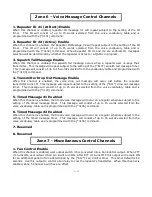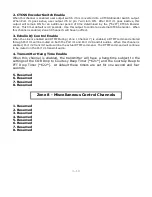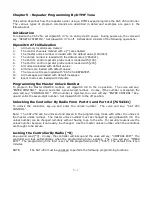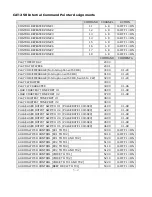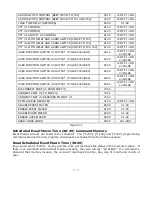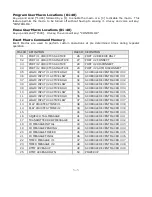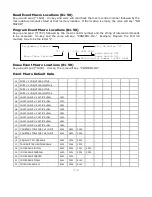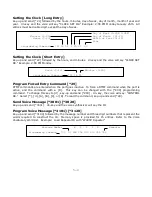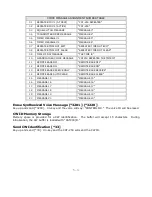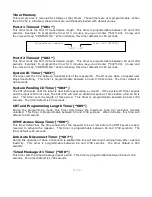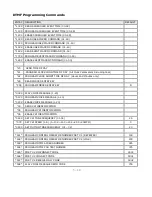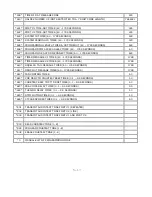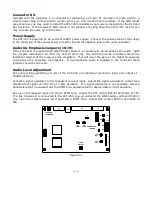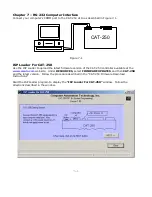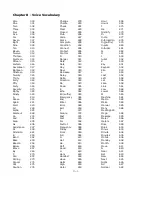
5-10
Program CW Identification [*34]
Key-up and send [*34], followed by the two digit numbers that represents the call letter identification.
Memory space is provided for (15) entries. Refer to the CW ID programming table. Example: Load
CW ID memory buffer with DE W4XYZ/R.
00=0
07=7
14=E
21=L
28=S
35=Z
42=[?]
01=1
08=8
15=F
22=M
29=T
36=/
43=[-]
02=2
09=9
16=G
23=N
30=U
37=AR
44=(
03=3
10=A
17=H
24=O
31=V
38=SPACE
45=SK
04=4
11=B
18=I
25=P
32=W
39=[.]
05=5
12=C
19=J
26=Q
33=X
40=[;]
06=6
13=D
20=K
27=R
34=Y
41=[:]
Erase CW Identification [*35]
Key-up and send [*35]. Un-key and the voice will say: "CONTROL OK." If the CW ID buffer is empty
and a repeater user keys-up during a voice ID, the voice ID will stop.
Control Code And Prefix Number Memory
This memory area is reserved for storage of control and prefix numbers. These numbers can be from
one to seven digits and will change to a default value when the CAT-250 is powered up with dip-switch
#7 set to the on position.
Control Operator Prefix Number Port #1 (Repeater) [*501*]
This programming command selects the control operator prefix number for the repeater port. This
number must precede the command to change the zone control channels. Example: To program a
Control Operator Prefix of [100], key-up and send:
Un-key, the voice will say: "CONTROL OK." The default number is [100].
Programming D E SPACE W 4 X Y Z / R
Command
*34 13 14 38 32 04 33 34 35 36 27
Programming Command Control Operator Prefix Number
*501* 100
Содержание CAT-250
Страница 49: ...9 1 Chapter 9 Drawings CAT 250 Repeater Controller Figure 9 1 ...
Страница 51: ...10 2 ...
Страница 52: ...10 3 ...
Страница 53: ...10 1 ...


